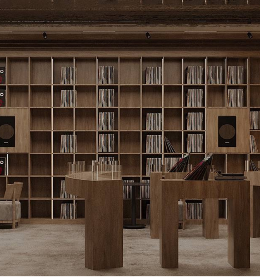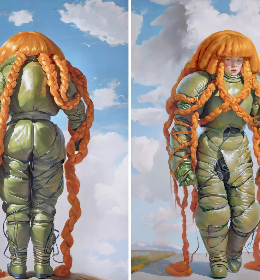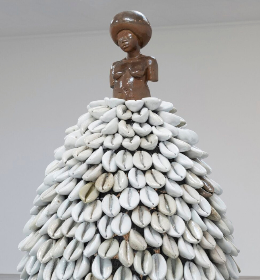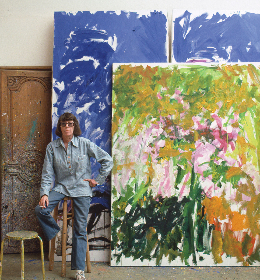Yüksel Arslan — Galerist, Istanbul & Galeri Nev, Ankara
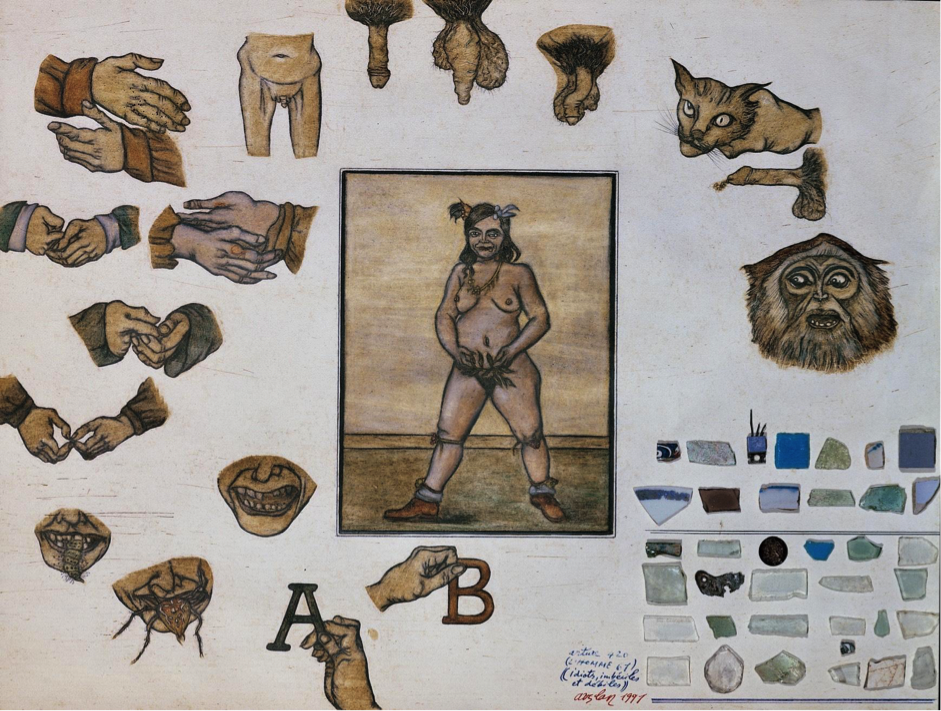
Arture 420, Idiots, Imbéciles et Débiles. L’Homme (1991)
Galerist (Istanbul) and Galeri Nev (Ankara) are joining forces to pay homage to the great artist Yüksel Arslan, who passed away in Paris, 2017. Born in Istanbul in 1933, Yüksel Arslan studied history of art before turning to his practice of painting, which he wished to be distinct, wiping clean the slate of all art that had come before. He gained recognition in 1959, when André Breton invited him to exhibit at the famous Exposition Internationale du Surréalisme at the Daniel Cordier gallery, and would set up in Paris in 1961. He referred to his works as “Arture” (art merged with the French suffix “-ure”, indicating a state), unable to define his medium as either painting, or drawing, or sketches on paper… It could be said that Yüksel Arslan’s work possesses a certain universality, evoking anthropology, sociology, medicine, philosophy and anatomy. The collection of mixed works on paper that the booth exhibits seem as didactic as they are ironic about the triviality and absurdity of life, as defined by Nietzsche, with whom Yüksel Arslan aligned himself. Thus this work, a sort of anatomical plate, explains the size variations of the penis. Arslan channels his intention through half-pornographic, half-anatomical drawings (rectal examination, diagrams of the male menopause and phallic physiology). The phallus is the central theme of the selection of works here; this is evident with this small work taking centre stage in the booth, with its stylised penis in the style of the Hindu Shiva Lingam. Indeed, the surgical description of human, animal and pathological mechanics (the penis, orgasm, animal reproduction, schizophrenia, etc.) seems to resonate well with Lucretius’ De Natura Rerum.
Eleonore Koch — Galeria Almeida e Dale, Galeria Marilia Razuk, São Paulo
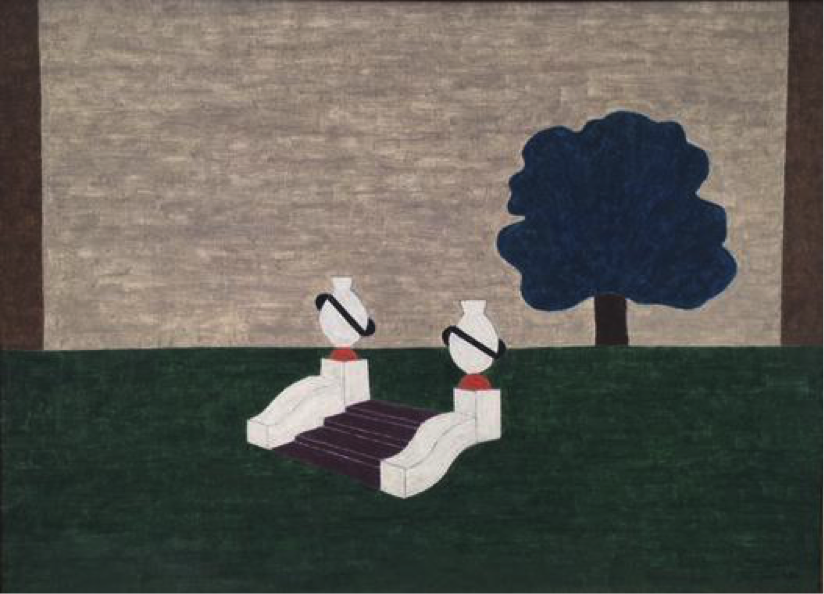
Eleonore Koch, Untitled, 1984
Born into a Jewish family in Berlin, Eleonore Koch (1926-2018) was ten years old when her family moved to São Paulo, Brazil, to escape the Nazis. As a young woman, she learned to book-bind and discovered painting through Yolanda Mohalyi, sculpture through Bruno Giorgi. In 1948 she returned to Paris, then the world centre of art. She studied painting with Arpad Szenes and sculpture with Robert Coutin. With a return to Brazil far from her to-do list (she turned down the São Paulo Biennial several times), she settled in London until 1989, supported financially by collector Alistair McAlpine and through her job as a Portuguese translator for Scotland Yard. Recognition of her work didn’t arrive until much later: it wasn’t until 2013 that a monograph by Paulo Venancio Filho paid tribute to her. Her works feature landscapes, often deserted and mysterious, where the absence of the human figure is glaring. The use of colour is carefully studied, applied as a flat tint with particular attention to the matter, playing with contrast and thickness
Hayv Kahraman — Jack Shainman Gallery, New York
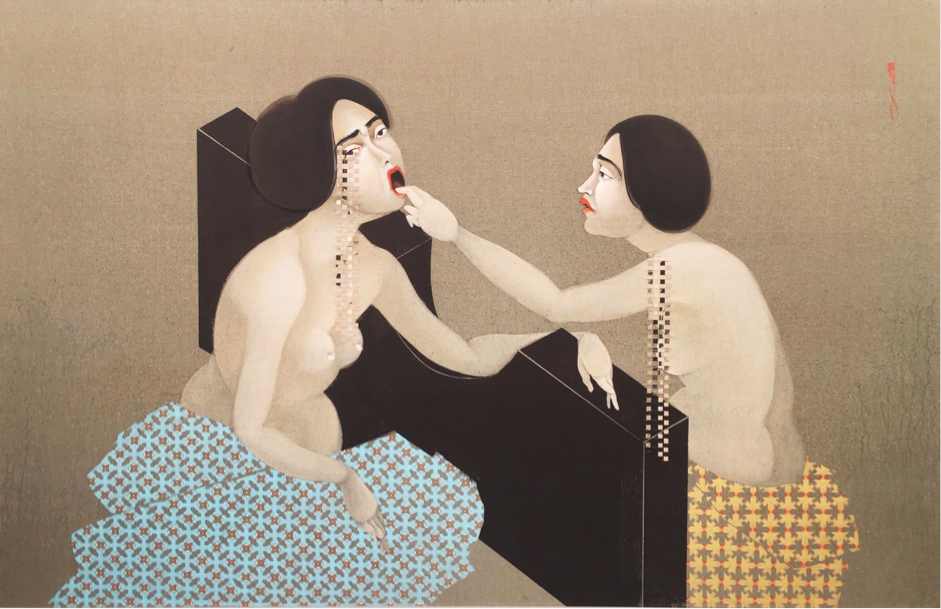
Hayv Kahraman, Barricade 1, 2018
Hayv Kahraman, a young Iraqi artist, is principally concerned with the subject of femininity within intimate circles and social spheres, but also with the role of women in monotheistic stories. Her paintings depict women who are often partly naked, covered in jewellery and rich ornaments. Her technique resembles Persian miniatures in its finesse of detail and the glow of colours. In Kahraman’s work, women possess all the power and reveal a part of their mystery to the viewer. Well known since 2009, when she took part in the history-making Saatchi Gallery exhibition “Unveiled: New art from the Middle East”, Hayv Kahraman is currently showing her work as part of “Suffering from Realness” at the MASS Moca in North Adams, Massachusetts.
William T. Williams — Michael Rosenfeld Gallery, New York

William T. Williams. Sister of Neckbone, 1970. 274,3 x 213,4 cm
Michael Rosenfeld Gallery is dedicating its booth to a selection of previously unseen pieces by American artist William T. Williams (1942), dating from 1970. Twelve works on paper and two monumental paintings were re-found recently, and formed part of the Diamond in a Box series. The works date from the same time as the eponymous exhibition held in 1971 at New York’s Reese Palley Gallery, which was the artist’s moment of discovery. In this brightly coloured series, the artist sought to create a dynamic and to build the structure of his compositions through a masterly play of abstract and geometric forms. William T. Williams explains that these works were conceived in response to the horror of the Vietnamese War and to the civil rights movement. The artist has also confessed the significance of jazz in his creative process: “One aspect of jazz that interested me in the late 60s was its complexity, especially its complex polyrhythmic structure, and I consciously began to seek out jazz at the time”.
Ardeshir Tabrizi — Roberts Projects, Los Angeles

Zoorkhaneh, 2019
Ardeshir Tabrizi, born in Tehran in 1981, creates works which evoke embroidery on the canvas as much as they do ink, evokes pearls as much as dental floss. The title of the piece exhibited by Roberts Projects, Zoorkhaneh, is taken from the Iranian gym (zurkhaneh) in which traditional Iranian sports such as varzesh-e Pahlavani (a mixture of wrestling and bodybuilding to the rhythm of the tombak, a sort of drum) are practised. It is worth really taking the time to study Ardeshir Tabrizi’s work, which is highly detailed (with figures, wrestlers, etc.) and reminders of Persian miniatures’ influence. On a background embellished with figurines inside round cartouches, the artist had delicately embroidered the silhouette of two wrestlers. The gallery is also exhibiting a selection of oil paintings on paper by Ghanaian artist Amoako Boafo, who pays homage to the portraits of Egon Schiele. A must-see.
Frieze Art Fair New York — May 2-5 at Randall's Island Park





